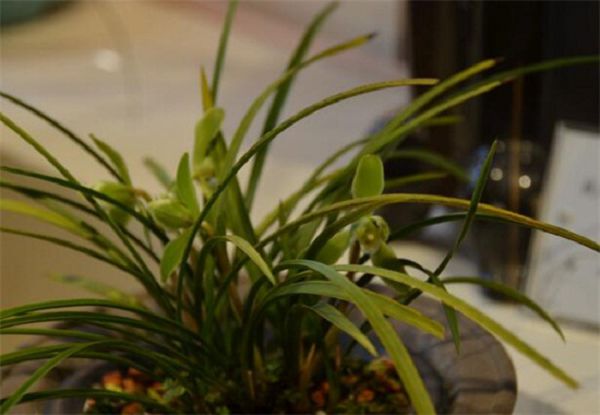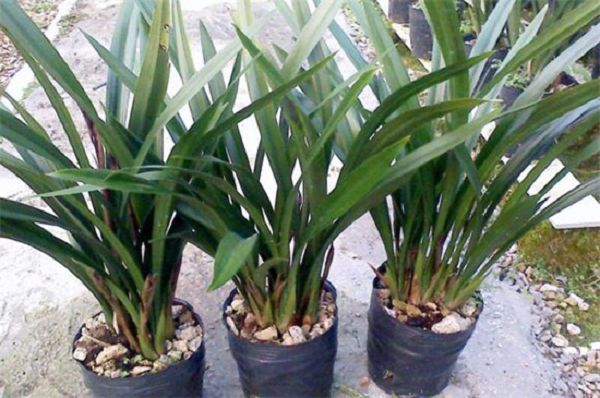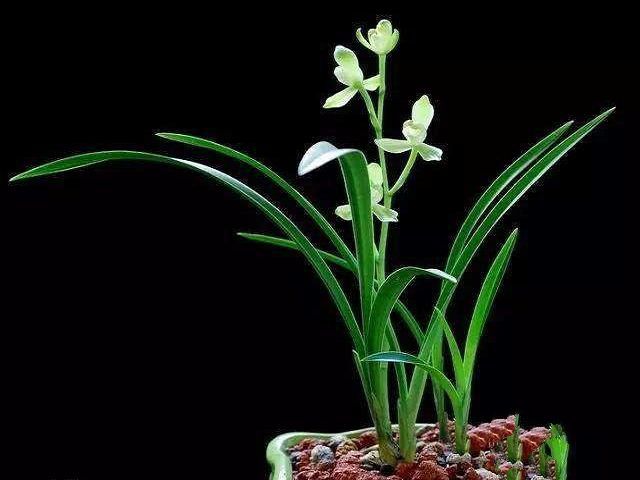What if the orchid leaves are too long, daily pruning and giving plenty of sunshine

Orchid symbolizes nobility and elegance, it and plum, bamboo, chrysanthemum and listed as four gentlemen, orchids have a variety of colors, have a high ornamental value, flower friends like to cultivate orchids, but do not know what to do with orchid leaves too long, can be daily to orchid leaves pruning, usually more sun, not only conducive to orchid growth, but also can prevent overgrowth, usually breeding temperature also need to pay attention to.
The solution to the problem that the leaves of orchids are too long
Whenever the leaves of cultured orchids are too long, they can be trimmed without pruning too short, and the overgrown leaves, lateral leaves, old leaves and useless leaves of orchids can be cut off, which can reduce the nutrient consumption of orchids and promote the parts that can once bloom to get sufficient nutrients to promote the growth of orchids.
For the question of what to do if the orchid leaves are too long, after pruning the orchid, we need to give it enough sunlight. If the orchid does not get enough sunlight, it will cause overgrowth, and the orchid will undergo photosynthesis in sufficient sunlight to promote the orchid to grow better and produce beautiful flowers. It can also prevent the orchid from overgrowing, but it can not be cultured in strong sunlight, so when the weather is hot. It needs to be moved to astigmatism for breeding.
2. Culture methods of orchids 1. Soil selection
In order to cultivate orchids at ordinary times, we first need to find a suitable soil for orchids. orchids have higher requirements for soil and need loose soil, breathable water retention, fertile and somewhat acidic soil. Yellow sand, sawdust and river sand can be mixed according to the proportion of 4:4:2, or sawdust, rotten leaf soil and coarse sand can be mixed according to 6:2:2. These two kinds of soil are suitable for orchid culture.
2. Watering in time
Orchids like to grow in a humid environment, need to give orchids in time, otherwise the lack of water will affect the growth, growth may cause orchid death, spring and autumn can be watered every 2-3 days, summer can be watered once a day, if the weather is too hot, you can spray some water around, you can spray water every other week in winter, each watering does not need too much, just keep the soil moist.
3. Apply thin fertilizer frequently
Orchids need sufficient nutrients to promote its growth better, but each fertilization can not be too much, otherwise it will cause soil, need to do a good job of thin fertilizer frequently, spring and autumn can be once every other week to apply mature alum fertilizer, orchids in summer is the growth period, so need to apply phosphorus and potassium fertilizer every half a month, winter can be appropriate fertilization to help orchids safely through the winter.
4. Control temperature
The orchid is tough but not resistant to high temperature. It is suitable for growing at 8: 15 ℃ and cannot be higher than 30 ℃, otherwise it will affect the normal growth of the orchid. The orchid can be moved to a shady place for breeding. If the temperature is too high, you can spray some water around the orchid to keep the humidity of the air not lower than 0 ℃, otherwise it will make the orchid freeze its roots. It is best to control its growth environment temperature above 5 ℃ every winter to help safely survive the winter. It can also benefit the growth of orchids.
Prevention and control of diseases and insect pests of orchids 1. Rust spot
The most common disease of orchids is rust spot, which will make some leaves of orchids show small yellow spots at the beginning of the disease. regardless of the rapid spread, the small yellow spots will gradually become larger and turn dark brown, which will not only affect the ornamental value of orchids, but also affect the yield of flowering, and eventually lead to the wilting and death of orchids.
Prevention and control methods: first, move the orchid to the environmental ventilation place, and have enough sunlight, cut off all the diseased branches and leaves, burn them and bury them deep in the soil to prevent the spread of rust spot, then spray 2000 times of 20% trimethoprim EC, or 1000 times of trimethoprim, spray once every 5 days, three times in a row.
2. Nematodes
Nematodes will parasitize on the roots of orchids, cause great harm to the roots, cause root rot, cause poor growth of orchids, cause leaves to wither, lose their original color, affect the ornamental value of orchids and fail to produce beautiful flowers, which will eventually lead to the death of the whole orchid plant.
Prevention and control methods: the orchids need to be dug out of the soil, cut off the rotten roots, can be soaked in 10 grams of phosphorus, 3% miler, 5% Yishubao and other agents to disinfect the new soil, and then disinfect the treated orchid planting soil to improve the breeding environment and reduce watering and fertilization.
Related
- Is the orchid suitable for indoor use? Is it good for the body?
- How to prevent the empty root of orchids?
- What to do after the crab claw orchid is withered?
- Why are the leaves of orchids always yellow? Fertilizing and watering.
- Can the root of the gentleman orchid be saved if it is rotten?
- Diagnosis and treatment of cotton-blowing beetle insects in Cymbidium
- There is a way for a gentleman's orchid to rot.
- What is the most suitable temperature and humidity for the orchid?
- How to raise a gentleman's orchid? Cultivation techniques of Cymbidium
- How to prepare the nutritive soil for the cultivation of Cymbidium



